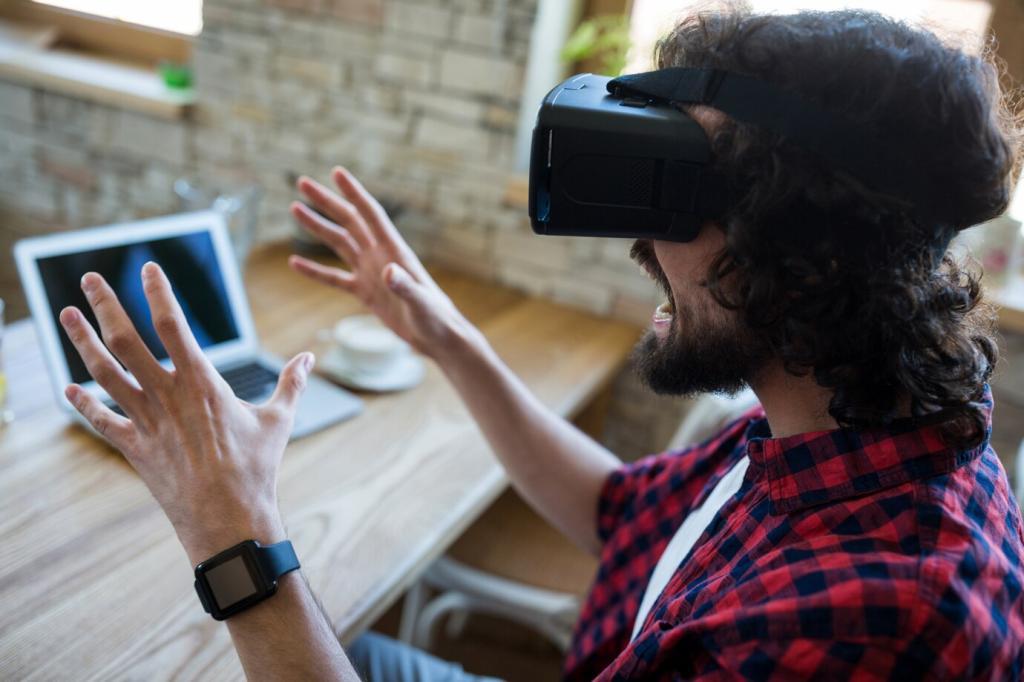Enhancing Student Engagement Through VR in Education
Virtual Reality (VR) is revolutionizing the educational landscape by providing immersive and interactive learning experiences that transcend traditional classroom boundaries. By integrating VR into lessons, educators can captivate students’ attention, foster deep understanding, and encourage active participation. This approach transforms passive information consumption into dynamic exploration, empowering students to engage with content in meaningful, memorable ways. As VR technology becomes increasingly accessible, its potential to boost engagement and improve learning outcomes continues to expand, making it an essential tool for the modern educator seeking to inspire and connect with their students.

Immersive Learning Environments
Realistic Simulations
Realistic simulations in VR enable students to gain hands-on experience without the risks or limitations of real-life settings. For example, a biology class can perform intricate dissections, a chemistry student can experiment with volatile reactions, or a history lesson can involve reliving key events from the past. These simulations immerse learners in lifelike scenarios, promoting experiential learning that deepens their comprehension and helps them develop critical thinking skills. The authenticity of VR experiences encourages learners to ask questions, explore possible outcomes, and tackle problems as they arise. By bridging the gap between theoretical knowledge and practical application, realistic simulations significantly enhance student engagement and confidence.
Exploration Beyond the Textbook
VR empowers students to go beyond static pages and discover information in three-dimensional spaces. Geography lessons are transformed by allowing students to virtually trek through rainforests or observe the melting of polar ice caps firsthand. In literature courses, learners can walk through the settings of classic novels or experience narratives from various perspectives. This depth of exploration makes content more relatable and memorable, sparking students’ innate curiosity. Through these immersive journeys, learners are not just passive recipients of information—they actively engage, experiment, and construct knowledge in a manner that traditional resources cannot provide. Such experiences foster intrinsic motivation and a lasting love for learning.
Interactive Problem Solving
In VR, students are confronted with dynamic challenges that require real-time decision making and adaptation. Educational scenarios encourage collaborative efforts, critical thinking, and creative solutions as learners engage directly with problems presented in virtual space. For instance, engineering students might work in teams to design bridges that withstand earthquakes, or language learners might navigate conversations with virtual native speakers. The interactive nature of these tasks keeps students attentive and invested in finding solutions, while also allowing for safe failure and immediate feedback. Such active participation leads to a deeper mastery of material and a constructive approach to overcoming obstacles in learning.
Personalized and Differentiated Learning
VR platforms often incorporate adaptive technologies that respond to student performance in real time. Content difficulty, pacing, and feedback can adjust based on learners’ achievements and challenges, creating a tailored experience that keeps students motivated. For example, when a student is excelling in a mathematics module, VR can introduce more complex problems; meanwhile, it might provide additional scaffolding and step-by-step guidance for those struggling with foundational concepts. This flexibility ensures that every learner is sufficiently challenged without feeling overwhelmed, promoting steady progress and sustained engagement across varied abilities within the same class.

Collaborative and Social Interaction
In VR, students have the opportunity to participate in collaborative projects that simulate real-world teamwork. From constructing digital models in STEM subjects to developing virtual performances in the arts, these activities require coordination, communication, and a shared vision. Team projects within virtual environments allow participants to divide tasks according to individual strengths and learn to navigate group dynamics just as they would in professional settings. This collaborative aspect not only boosts engagement, but it also prepares students for the cooperative demands of higher education and the workplace. By working together in VR, learners gain a sense of accomplishment and appreciation for diverse perspectives.
